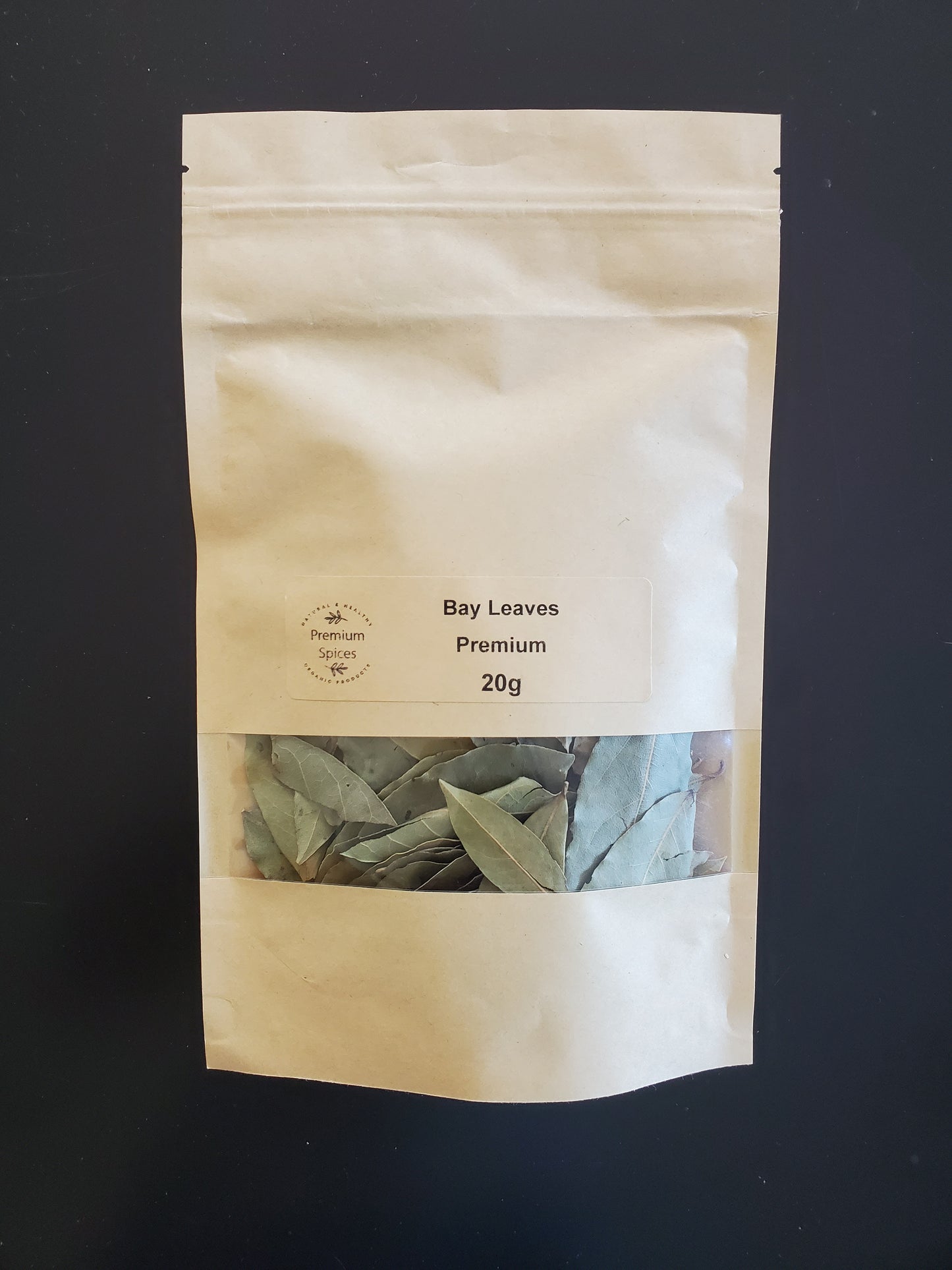Premium Spices
Premium Bay Leaves
Premium Bay Leaves
Couldn't load pickup availability
Botanical name:Laurus nobilis ▪ Family name: Lauraceae
Bay leaves come from the laurel (or bay) tree, a native of the Mediterranean region. Traditionally used in making wreaths for victors, the bay has come to be a symbol of success. This herb has an ancient reputation for enhancing life and encouraging health and happiness.
Fresh or dried bay leaves are used in cooking for their distinctive flavour and fragrance. The leaves are often used to flavour soups, stews, braises and pâtés in Mediterranean cuisine. The fresh leaves are very mild and do not develop their full flavour until several weeks after picking and drying.
Major producers: Turkey, Western Europe, Central America, Northern America
Taste and Aroma:If eaten whole, bay leaves are pungent and have a sharp, bitter taste. As with many spices and flavourings, the fragrance of the bay leaf is more noticeable than its taste. When dried, the fragrance is herbal, slightly floral, and somewhat similar to oregano and thyme. Myrcene, which is a component of many essential oils used in perfumery, can be extracted from the bay leaf. Bay leaves also contain the essential oil eugenol.
Culinary uses:Bay leaves are a fixture in the cooking of many European cuisines, as well as in North America. They are used in soups, stews, meat, seafood and vegetable dishes. The leaves also flavour many classic French dishes. The leaves are most often used whole and removed before serving. In Indian and Pakistani cuisine bay leaves are typically used in biryani, other rich spicy dishes - although not as an everyday ingredient in home cuisine - and as an ingredient in garam masala.
Only one leaf is necessary to give a special flavour to meals, and it should be removed after cooking. A bay leaf should be included in white sauces, and also gives a distinctive flavour to milk puddings.
Bay leaves can also be crushed or ground before cooking. Crushed bay leaves impart more of their desired fragrance than whole leaves, but are more difficult to remove, and thus they are often used in a muslin bag or tea infuser. Ground bay laurel may be substituted for whole leaves, and does not need to be removed, but it is much stronger due to the increased surface area and in some dishes the texture may not be desirable.
Herbal Remedies: In the Middle Ages, bay leaves were believed to induce abortions and to have many magical qualities. They were once used to keep moths away, owing to the leaf's lauric acid content that gives it insecticidal properties. Bay leaves have many properties that make them useful for treating high blood sugar, migraine headaches, bacterial and fungal infections, and gastric ulcers. Further claims are that the herb can ease colds, the flu and even rheumatism. Bay leaves and berries have been used for their astringent, carminative, diaphoretic, digestive, diuretic, emetic and stoma chic properties
Storage: Organic Bay Leaves will keep for up to 2 years when stored in an airtight container.
Country of Origin: Egypt or India
They are available by 20g, 100g
Share




